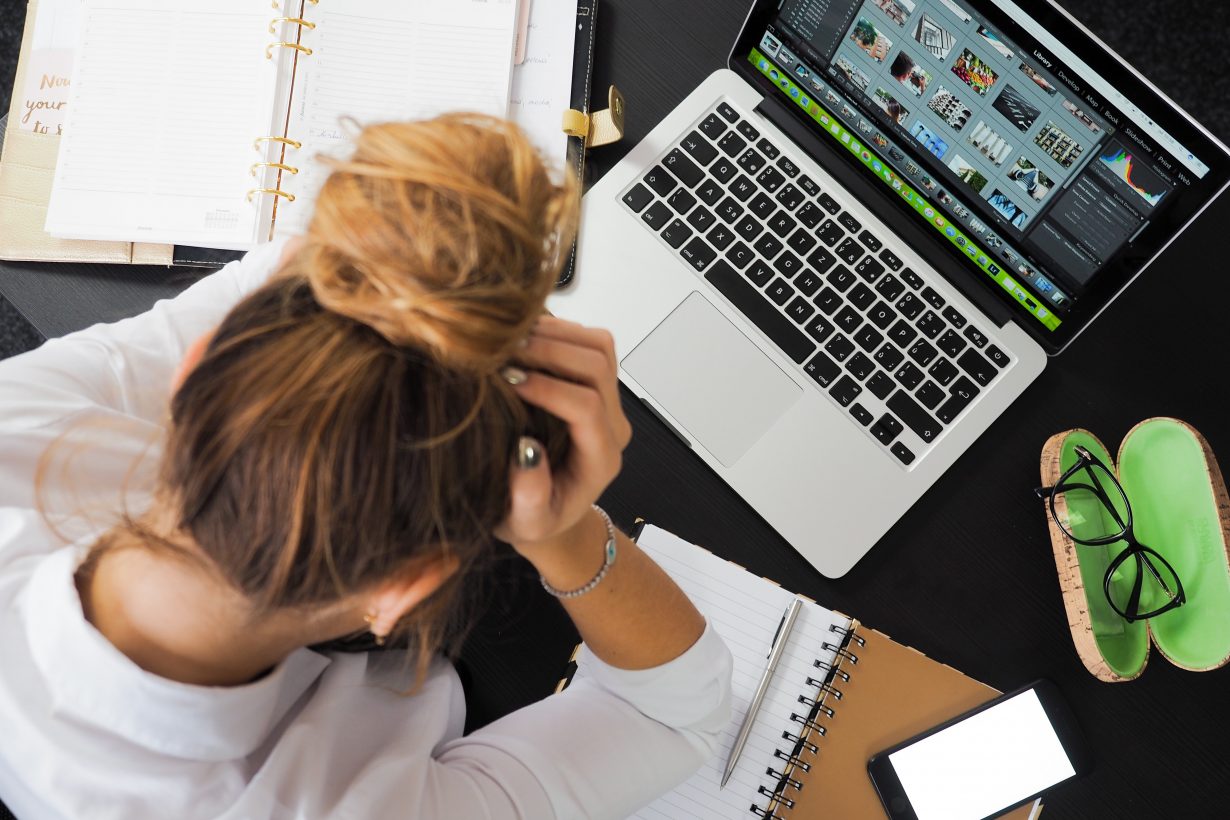
The Rise of Anxiety Symptoms and Types
Jillian Levy, CHHC via Dr. Axe – It’s not just your imagination, rates of anxiety really are increasing, especially among young people. Anxiety disorders are now the most common mental illness in the U.S.
Research is clear that on-and-off again anxiety symptoms, as well as diagnosable anxiety disorders, are on the rise. In fact, such an alarming number of millennials (ages 23 to 38 as of 2019), teens and even children now deal with anxiety that the condition is being called an “epidemic.”
Just how many people have anxiety? The Anxiety and Depression Association of America estimates that 40 million American adults — equal to about 18% of the population, or just under one in five people — have an anxiety disorder.
A 2019 public opinion survey conducted by the American Psychiatric Association (APA) found that a whopping 68 percent of people polled felt a combination of “extremely and somewhat anxious” most of the time.
What Is Anxiety?
Anxiety is defined as “a feeling of worry, nervousness, or unease, typically about an imminent event or something with an uncertain outcome.”
While it’s common and considered totally “normal” to feel nervous from time to time, it’s not normal to feel uncontrollably worried or fearful most of the time. This is what life is like for a person with an anxiety disorder — their relationships, performance at work, family obligations and other daily activities all tend to be negatively impacted.
Types of Anxiety
The National Institute of Mental Health considers the following conditions to be the major types of anxiety disorders:
• Generalized anxiety disorder (GAD), which affects about 3 percent of the population and is characterized by uncontrollable, persistent, excessive and unwarranted worry.
• Obsessive compulsive disorder (OCD), when excessive thoughts (obsessions) lead to repetitive behaviors (compulsions).
• Social anxiety disorder (SAD), which involves intense fear of social or performance situations. This typically begins around age 13 and tends to last for many years.
• Panic disorder (PD), in which someone has recurrent unexpected panic attacks.
Phobias, or intense fears of — or aversion to — specific objects.
• Post-traumatic Stress Disorder (PTSD), which describes difficulty recovering after experiencing or witnessing a terrifying event.
• Anxiety is also related to depression; it’s estimated that about half of people with anxiety also experience symptoms of depression. While not as common, some may also experience bipolar disorder.
What Is an Anxiety Attack?
Anxiety attacks, also called panic attacks, affect about 3 percent of the American population.
Anxiety attack symptoms — which tend to come on suddenly reach their peak within minutes — include those listed below (symptoms that are generally common among people with anxiety), as well as heart palpitations, dizziness, trembling and shortness of breath. These attacks may have clear triggers, or seem to come out of nowhere, but they usually lead to feelings of loss of control and “impending doom.”
Symptoms
Anxiety symptoms are linked to the body’s “fight or flight” response, which describes a physiological reaction in response to a perceived attack or threat. These symptoms can impact just about every system in the body: the central nervous, endocrine, digestive, cardiovascular systems and so on.
Anxiety symptoms can include:
• Persistent worrying (the most common generalized anxiety disorder symptom)
• Muscle tension, chest tightness and neck pains
• Heart palpitations, racing heart beat and high blood pressure (especially common with panic attacks)
Trouble sleeping, restlessness and insomnia
Digestive problems, which might include constipation, diarrhea or lack of appetite
Irritability, mood swings and depression
Difficulty concentrating
Sweating
Inability to socialize
Often times anxiety occurs with other physical and mental disorders (“co-occurrences”), such as:
• Eating disorders
• Migraines or tension headaches
• Digestive issues like irritable bowel syndrome (IBS)
• Sleep disorders
• Substance abuse problems
• ADHD
• Chronic pain
• Fibromyalgia
Causes
What is the No. 1 cause of anxiety? There isn’t just one cause, as people develop anxiety for different and complex reasons.
For example, known risk factors for anxiety disorders include being female, as well as experiencing stressful life events in childhood and adulthood, having a family history of mental health disorders, having limited economic resources, being chronically ill, and being shy in childhood.
The most common anxiety causes are believed to be:
• stress due to poor or challenging life circumstances. Many people report that life problems contributing to their level of stress include exhaustion due to long working hours, long commutes, unemployment, money problems, losing someone close to you, feeling lonely or isolated, and being bullied.
• traumatic life experiences, including abuse, rape or violence
• genetics/family history, which may lead to certain personality traits that exacerbate worry
• dysfunctional serotonin production
• excessive alcohol intake
• drug use
• high caffeine or sugar intake
• hormone fluctuations, such as those tied to thyroid problems, pregnancy, PMS or menopause
Why Is Anxiety Increasing Now?
Many of these causes have affected people throughout history, so what is it about the past decade or so that has contributed to rising rates of anxiety?
As mentioned above, people report being most anxious about health, safety, finances, politics and relationships. Experts believe that these concerns may be provoked by 24/7 news broadcasting, the rise of social media and near-constant digital connectivity.
Busy schedules that leave little time for regular exercise, sleep, relaxation and time socializing also seem to be factors. Then there’s the fact that people are eating less healthy diets overall, taking more medications that may worsen anxiety and suffering from more chronic health problems that are burdensome.
Finally, as experts recently explained to the Washington Post, “The compulsive pursuit of substance abuse and addictive behaviors is causing severe unhappiness and depression in the US.” One example is the ongoing opioid crisis.
This is why some argue that anxiety shouldn’t be viewed as an individual’s problem, but rather that it’s inseparable from wide-ranging societal issues, such as political upheaval, environmental catastrophe, trauma and discrimination.
Are there different causes of anxiety in men vs. women? Research suggests there may be. Women are more likely to suffer from panic attacks and GAD, especially in combination with depression. Issues like sexual abuse and hormones may be partly to blame.
Age also matters. The National Alliance on Mental Illness (NAMI) explains why Millennials are often referred to as the “anxious generation”: They were the first to grow up with the internet and social media, which can make life feel more competitive and complicated, as millennials often compare their personal and professional achievements to everyone else’s.
According to NAMI, “This can result in low self-esteem and insecurity. The world is at Millennials’ fingertips, but they also feel its immense weight … There’s pressure to constantly be ‘on.’ To look and sound perfect, and act like you have it all together.”
On the bright side, a 2015 study by American University found that because millennials grew up hearing about anxiety, depression, eating disorders and suicide, they are typically more accepting of others with mental illness and may be more likely to get help.
Statistics
Below are some eye-opening facts about anxiety prevalence increasing:
• What age group has the highest rate of anxiety? Different races/ethnicity and people of all ages seem to be worrying more than in previous years. The APA poll mentioned above found that millennials are more anxious than older people, however, baby boomers reported the greatest increase in anxiety symptoms. In developed countries, an estimated 50 percent of mental health problems are established by age 14 and 75 percent by age 24.
• Among teens and children, anxiety disorders now affect between 8 and 25 percent of those between the ages of 13 and 18. This can contribute to problems in school and difficulty socializing, as well as increased risk for substance abuse.
• Which country has the highest rate of anxiety? The World Health Organization (WHO) has found that richer countries have higher rates of anxiety in their population than poorer countries. WHO estimates that worldwide, about 1 in 13 people suffers from anxiety. Countries with the highest rates include Australia, New Zealand, the U.S., Spain, Ireland and France.
• A significant numbers of Americans consider themselves to be considerably stressed. According to Time Magazine’s report on the “Stress in America” survey, “63 percent of Americans say the future of the nation is a significant source of stress, and 59 percent feel that the United States is at the lowest point they can remember in history.” Roughly 40 percent of Americans report feeling more anxious than they did one year prior, while another 40 percent say they were equally anxious.
• The greatest sources of anxiety among adults include keeping one’s family safe, health, expenses/finances, politics and relationships.
• Only about one in three people (37 percent) suffering with anxiety receives treatment.
• Compared to those who don’t have a disorder, people with anxiety disorders are 3-to-5 times more likely to go to the doctor and six times more likely to be hospitalized.
Treatments
Conventional Treatments:
• Medications may be used to manage severe anxiety symptoms. Examples of such medications include selective serotonin reuptake inhibitors (SSRIs), serotonin-norepinephrine reuptake inhibitors (SNRIs), the serotonergic medication called Buspirone, sedative medications like benzodiazepines or antidepressants.
• When medications are used, they are usually given in combination with therapy, especially cognitive behavioral treatment (CBT). CBT has been shown to help change thoughts, physical symptoms and behaviors among people with anxiety symptoms. CBT works by identifying, challenging, and then neutralizing unhelpful or distorted thoughts underlying anxiety disorders.
• Mindfulness-based approaches are also used to reduce worrying, including guided meditations and Acceptance Commitment Therapy, which emphasizes behaviors that are consistent with the patient’s values.
Natural Remedies:
• Relaxation techniques (also called mind-body practices) like deep breathing exercises, meditation, yoga and acupuncture.
• Regular exercise, especially aerobic/cardiovascular exercise, but also other types that the person enjoys.
• Eating a healthy diet, one that includes vitamin B foods, magnesium-rich foods, foods high in calcium and omega-3 foods (like olive oil, nuts and seeds, salmon, fruits and vegetables, whole grains, and probiotic foods).
• Avoiding sleep deprivation, which means getting about 7–9 hours of sleep per night.
• Maintaining a consistent, regular daily routine. This includes having a regular sleep/wake cycle, eating regular meals and staying organized.
• Journaling thoughts and worries, along with practicing/writing down things to be grateful for.
• Avoiding excessive alcohol, caffeine and sugar intake.
• Taking/using supplements and essential oils that support the nervous system, such as adaptogen herbs, magnesium, a vitamin B complex, amino acids such as GABA, and essential oils like chamomile oil and lavender oil.
• Volunteering and socializing form.
• Joining a support group, whether in person or online.
Final Thoughts
• Anxiety disorder symptoms are on the rise, including among millenials, children, teens and baby boomers.
• The most common symptoms of anxiety include both physical symptoms, like racing heart beat, trouble sleeping and difficulty sleeping, as well as emotional symptoms such as trouble socializing, mood swings and depression. Panic attacks can also affect some people with anxiety. Symptoms of an anxiety attack can include trembling, trouble breathing and feelings of impending doom.
• What causes anxiety? Some common causes seem to include difficult life circumstances, history of trauma or abuse, substance abuse, family history/genetics, and poor lifestyle choices like lack of sleep, healthy food and exercise.
• Treatments options include: medications, therapy like CBT, relaxation techniques like meditation, regular exercise, dietary changes, and use of supplements.
To read the original article click here.
For more articles from Dr. Axe click here.






